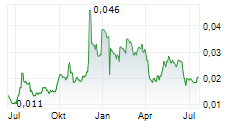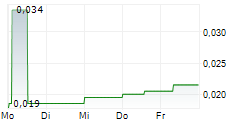
SYDNEY, Dec. 10, 2024 /PRNewswire/ -- Syntara Limited (ASX:SNT), a clinical-stage drug development company, is pleased to announce positive interim data from its ongoing Phase 2 clinical trial evaluating SNT-5505 (200 mg BID) in combination with ruxolitinib (RUX) for the treatment of myelofibrosis (MF)1. The interim results2 suggest that SNT-5505 has potential as a breakthrough therapy for MF and are being presented today at the 66th American Society of Hematology annual meeting (ASH). Further interim data will be released in 1H 2025 and final data in 2H 2025.
The interim data suggests that SNT-5505 compares favourably thus far to other drugs being trialled for MF demonstrating excellent tolerability and improvements in symptoms and spleen volume that increase over time.
This is in line with the anticipated disease modifying effects of a pan-LOX inhibitor that works to improve the bone marrow microenvironment and inhibits a growth factor receptor (PDGFR-b) that regulates cell expansion and division. This is encouraging, particularly given the trial patient population with a suboptimal response to existing standard of care and a high disease burden. Despite long prior RUX usage, most patients had high symptom scores and enlarged spleens at their entry into the trial.
Highlights2:
- At 12 weeks of treatment, 46% of evaluable patients3 achieved a 50% improvement in Total Symptom Score (TSS50) which improved to 80% at 38 weeks of treatment. TSS50 is a standard efficacy endpoint used as the primary endpoint in MF clinical trials.
- 30% of evaluable patients4 achieved a spleen volume reduction (SVR) of 25% and 20% achieved an SVR of 35%. Both levels are considered clinically meaningful, with SVR35 a typical endpoint used in MF clinical trials.
- Patient symptoms and spleen volume continued to improve over the duration of the interim data which is a novel finding that differentiates SNT-5505 from MF drugs on market and in later stages of development. It highlights the potential of SNT-5505 to be used in combination with JAK inhibitors to change the long-term outcomes for MF patients.
- SNT-5505 is safe & well tolerated with no treatment related serious adverse events noted at this interim stage - viewed together with the excellent safety profile seen in the earlier monotherapy study5 this is emerging as another key differentiator to MF drugs on the market and in development.
- After receiving data from a subset of patients reaching 52 weeks of treatment by March 2025, the company intends to discuss with the FDA the trial design for a pivotal Phase 2c/3 study. Concurrently, the company will also engage with potential global and regional partners.
The open-label study, which aims to assess the safety and efficacy of SNT-5505 over 52 weeks, has enrolled 16 patients with intermediate-2 or high-risk MF to date, with data extracted for use at ASH on 14 November 2024:
- 13 patients had reached 12-week visit
- 8 patients had reached 24-week visit
- 5 patients had reached 38-week visit
Patients enrolled had a median RUX exposure of 3.2 years and a median baseline symptom score of 23, indicative of a high disease burden.
Professor Claire Harrison, Professor of myeloproliferative neoplasms at Guy's and St Thomas' NHS Foundation Trust, commented:
"This interim data confirms the excellent safety profile of SNT-5505 and also suggests that the mechanism of SNT-5505 may exert a long-term effect on the disease, with both symptoms and spleen volume continuing to improve as we now see patients on drug for 9 months. This hasn't been seen before with this class of drug and holds potential for real long-term benefits for MF patients. I look forward to seeing the data mature in the coming months to confirm these important early findings."
Key points from the interim data2:
- Safety and tolerability:
- SNT-5505, in combination with a stable dose of RUX, was safe and well tolerated. There were no treatment related serious adverse events (SAEs) attributed to SNT-5505.
- Substantial symptom relief observed over time:
- At Week 12 - 46% (6/13) of evaluable patients3 achieved a =50% reduction in Myelofibrosis Symptom Assessment Form Total Symptom Score (TSS50), a benchmark for clinical response recognised by regulatory authorities such as the FDA.
- At Week 38 - 80% (4/5) of evaluable patients achieved a TSS50.
- Spleen volume reductions in the majority of patients:
- 82% (9/11) of evaluable patients3 experienced stable or reduced spleen volume with no dosage adjustments in RUX.
- 30% (3/10) of evaluable patients achieved an SVR25 and 20% (2/10) achieved an SVR35 with indications that patients were improving further at later timepoints.
- Notably, spleen reductions over the period of the interim data were achieved in patients despite significant duration (>2 years) prior RUX exposure with many on low daily doses (=20 mg/day).
- 80% (4/5) of evaluable patients showed further reductions in spleen volume from Week 24 to Week 38 which is a novel finding that differentiates SNT-5505 from other treatments on market and in development.
- Haematological parameters remain stable:
- Haemoglobin levels and platelet counts were generally stable across the cohort, with few major haematological toxicities reported.
- One (of 2) transfusion dependent patients showed reduced transfusion requirements (approximately 70% reduction from baseline) over the period of the interim data.
Syntara CEO Gary Phillips added:
"A well tolerated drug that produces increasing and durable benefit the longer patients stay on is an exciting prospect and would differentiate SNT-5505 from other MF drugs on the market and in development. The changes in symptom score seen in the interim data at 9 months, albeit from a relatively small cohort of patients, suggests a superiority to other drugs that have been trialled in this patient group and are particularly important given the emphasis that the FDA and other regulatory bodies place on this measure. We will continue to analyse the data coming in, and anticipate requesting feedback from the FDA on the next stage of clinical development in Q2 2025 when we will have a number of patients with 12 months of treatment data."
Of the 16 enrolled patients, 12 patients were continuing to receive treatment as of the ASH data cut off. Subsequent to the data cut off, a further three patients discontinued after receiving 6 months of therapy. No discontinuations for adverse events were considered related to SNT-5505 treatment. This level of discontinuations in clinical trials is consistent with a patient group with a high disease burden.
The Phase 2 trial has been designed to evaluate SNT-5505 in combination with RUX in patients with intermediate-2 or high-risk MF. Patients must have been on RUX for at least 12 weeks (stable dose for =8 weeks) before enrolling and be symptomatic. The study is being conducted across 19 sites in Australia, South Korea, Taiwan, and the USA, and the last patient visit is expected in July 2025 1.
The full ASH presentation is available here.
Footnotes: |
1. MF-101 combination study trial design: |
a. Clintrials.gov: https://clinicaltrials.gov/study/NCT04676529 |
b. Trial initiation media release |
2. Interim data may vary from the final outcome of the trial and is not a definitive indication of the final results. |
3. TSS Evaluable Patients definition: |
4. SVR Evaluable Patients definition: |
a. Includes 10 patients that had spleen volume measured up to Week 38 at time of data cut off for ASH slide presentation. |
b. Excludes 2 patients with a spleen volume less than 450 cm3 at baseline and 1 patient who had a serious adverse event (not drug related) where RUX was interrupted from Weeks 4-12 and stopped from Week 15. |
5. Final Set of Interim Data from PXS-5505 in Myelofibrosis - ASX Announcement, 12/7/23 |
CONTACT:
Syntara investor / media relations:
Matthew Wright
NWR Communications
+61 451 896 420
[email protected]
About Syntara
Syntara Limited (ABN: 75 082 811 630) is a clinical stage drug development company targeting extracellular matrix dysfunction with its world-leading expertise in amine oxidase chemistry and other technologies to develop novel medicines for blood cancers and conditions linked to inflammation and fibrosis.
Syntara is managing three phase 2 clinical studies in diseases of high unmet need with a further three potential phase 1c/2 studies being evaluated for 2025 Lead candidate SNT-5505 is for the bone marrow cancer myelofibrosis which causes a build-up of scar tissue that leads to loss of red and white blood cells and platelets. SNT-5505 has already achieved FDA Orphan Drug Designation and clearance under an Investigational New Drug Application for development in myelofibrosis. After encouraging phase 2a trial results when used as a monotherapy in myelofibrosis, SNT-5505 is now being studied with a JAK inhibitor in a further phase 2 myelofibrosis study with interim data by Q4 2024. Protocols for another two phase 1c/2 studies with SNT-5505 in patients with a blood cancer called myelodysplastic syndrome are in development and expected to commence recruitment by Q1 2025.
Syntara is also advancing both oral and topical pan-LOX inhibitors in scar prevention and scar modification programs as part of an ongoing collaboration with Professor Fiona Wood and the University of Western Australia. SNT-4728 is being studied in collaboration with Parkinson's UK as a best-in-class SSAO/MAOB inhibitor to treat sleep disorders and slow progression of neurodegenerative diseases like Parkinson's by reducing neuroinflammation.
Other Syntara drug candidates target fibrotic and inflammatory diseases such as kidney fibrosis, NASH, pulmonary fibrosis and cardiac fibrosis.
Syntara developed two respiratory products available in world markets (Bronchitol® for cystic fibrosis and Aridol®- a lung function test), which it sold in October 2023.
Syntara is listed on the Australian Securities Exchange, code SNT. The company's management and scientific discovery team are based in Sydney, Australia. www.syntaratx.com.au.
Forward-Looking Statements
Forward-looking statements in this media release include statements regarding our expectations, beliefs, hopes, goals, intentions, initiatives or strategies, including statements regarding the potential of products and drug candidates. All forward-looking statements included in this media release are based upon information available to us as of the date hereof. Actual results, performance or achievements could be significantly different from those expressed in, or implied by, these forward-looking statements. These forward-looking statements are not guarantees or predictions of future results, levels of performance, and involve known and unknown risks, uncertainties and other factors, many of which are beyond our control, and which may cause actual results to differ materially from those expressed in the statements contained in this document. For example, despite our efforts there is no certainty that we will be successful in partnering any of the products in our pipeline on commercially acceptable terms, in a timely fashion or at all. Except as required by law we undertake no obligation to update these forward-looking statements as a result of new information, future events or otherwise.
SOURCE Syntara Limited




